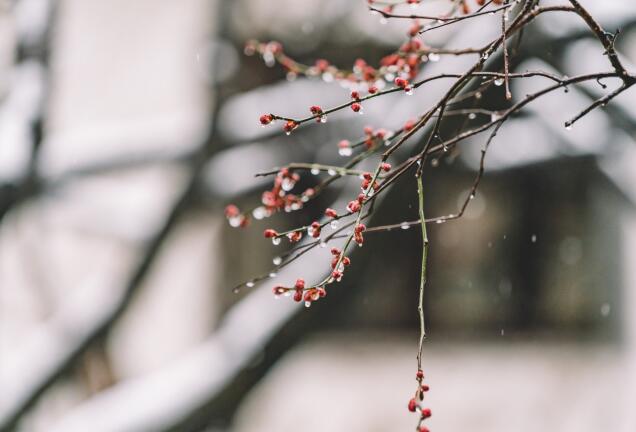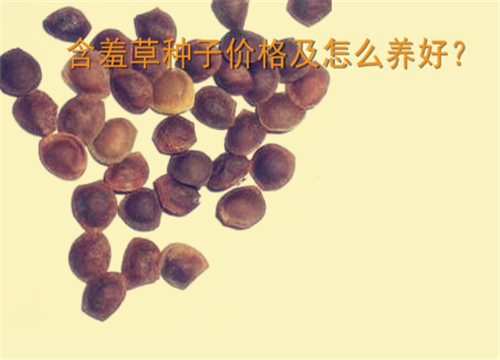Introduction to the culture method of "insectivorous plant" flytrap!
Flytrap is a famous insectivorous plant, which is loved by many people because of its ornamental value and fly-catching effect, and has become one of the beloved family potted plants. Then the editor will introduce to you the breeding methods of flytrap:
I. Matrix
When cultivating flycatcher, it is necessary to use a good water retention and acidic substrate. The PH value is between 3 and 5. Pure water moss or 2 parts of peat plus 1 part of perlite or coarse sand can be used. When planting, all the white bulbs should be buried in the substrate. If the leaves are bent downward, they can wrap the water moss on the stem or support the leaves after implantation. The matrix is usually changed once every 1-2 years, and it is best to change the basin before growing in early spring. The dead leaves should be cleaned up when changing pots, and if there are ramets, they should be planted separately to facilitate growth.
2. Water
The flytrap is sensitive to salt, and if the mineral concentration in the water is too high, the plant will decline until death, so the water with low mineral content must be used. In addition, the flycatcher likes to be wet and can not bear to be dry. It is necessary to maintain the humidity of the substrate but not to accumulate water in the growing season. In addition to daily watering, the low water basin immersion method can also be used to plant, the substrate must not dry out so as to avoid serious damage or even death caused by plant shrinkage. During the dormant period, the substrate should be kept damp but not wet. Plants are easy to rot if they are too wet.
Third, humidity
The air humidity of the flytrap should be kept above 50%, and the general planting environment can be satisfied, so there is no need for special humidification, as long as the basin soil is kept moist, but the new species of flytrap needs to maintain high humidity so as not to dehydrate and atrophy, and then gradually reduce the air humidity after the plants with long roots begin to grow normally.

4. Temperature
The suitable temperature for the growth of flytrap is 20-30 degrees, and it is easy to rot at high temperature in summer. good ventilation and light, cooling of roots and large temperature difference between day and night all help to reduce the occurrence of diseases. When the temperature is below 10 degrees in winter, most of the leaves will wither and only the small dormant leaves in the center will be withered. If the temperature is reduced to about 0 degrees, the leaves and roots may all wither and only underground bulbs may wither through the winter. The dormant bulb can resist the low temperature of-7 degrees for a short time.
5. Lighting
Flytrap is a light-loving plant, and suitable light can make the plant stronger, bigger clips and brighter colors, but high temperatures should be avoided in summer with shading nets with a shading rate of about 50% or in bright places where the sun is not exposed to the sun around noon. but lack of light will make the plant weak, slow growth, dark green leaves and small clamps. If the clip or petiole changes from red to green, it is not advisable to provide strong light immediately so as to avoid sunburn caused by not adapting to the strong light.
VI. Nutrients
In the growing season, you can use general compound fertilizer to dilute 5000 times and spray foliage once or twice a month. Fertilization would rather be applied with thin fertilizer rather than too high concentration so as not to cause fat injury or even death. The method of feeding can also be used to feed insects or fresh lean meat with the right size. The size of the 1x3 of the clip should be appropriate so that the clip can completely cover the food, but the number of clips should not exceed 1x3 of the total number of clips. Even if it is not fertilized or fed with flytrap, it will not starve to death. There are also necessary nutrients in the substrate. Plants must also grow through photosynthesis, and feeding can not replace photosynthesis, so it is still important to maintain good light.
7. Diseases and insect pests
Leaf spot disease and stem rot are easy to occur in hot and humid summer. Broad-spectrum fungicides can be used for prevention and control. In addition, good ventilation, root cooling, good light and large temperature difference between day and night all help to reduce the occurrence of the disease. if you find that part of the stem has rotted, you should immediately remove the rotten part, then soak in fungicide for 5 minutes and then implant into the sterilized clean substrate.
Summary: the above is about the relevant introduction of flytrap culture methods, friends who want to breed flytrap can refer to the above breeding methods according to their own situation, hoping to help friends in need!
Time: 2019-03-12 Click:
- Prev

What is the moral of plum blossom? What are the points for attention in planting?
Plum blossom is a traditional famous flower in China, and it has been argued that it has become a national flower. So what is the moral of plum blossom? What are the points for attention in planting plum blossoms? Below, there is an editor of Tuliu.com to answer them one by one. The moral of plum blossom, 1. The flower language of plum blossom is strong, noble, proud and unyielding, handsome and proud.
- Next

How much does the seed price of mimosa generally cost a catty? How?
Mimosa belongs to a kind of leguminous plants, remember the first time I saw mimosa is on both sides of the road, was discovered by my sister, and then take me to see, a walk to its side it will immediately put the leaves away, listen to adults say this belongs to mimosa self-protection consciousness. Now some people like to grow mimosas as ornamental plants
Related
- Fuxing push coffee new agricultural production and marketing class: lack of small-scale processing plants
- Jujube rice field leisure farm deep ploughing Yilan for five years to create a space for organic food and play
- Nongyu Farm-A trial of organic papaya for brave women with advanced technology
- Four points for attention in the prevention and control of diseases and insect pests of edible fungi
- How to add nutrient solution to Edible Fungi
- Is there any good way to control edible fungus mites?
- Open Inoculation Technology of Edible Fungi
- Is there any clever way to use fertilizer for edible fungus in winter?
- What agents are used to kill the pathogens of edible fungi in the mushroom shed?
- Rapid drying of Edible Fungi

